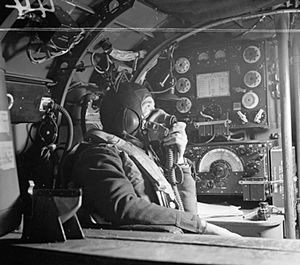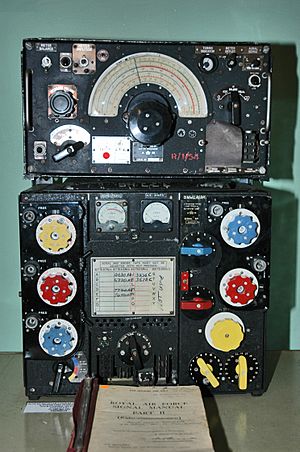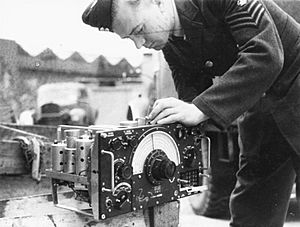R1155 facts for kids

The R1155 was a special radio receiver made in Britain. It worked with another radio, the T1154 transmitter. These radios were super important for aircraft during World War II.
The Royal Air Force (RAF) used them a lot. You would find them in big planes like the Avro Lancaster, Handley Page Halifax, and Vickers Wellington. Some of these radios were also used in vehicles and boats that helped rescue people from the sea.
Many British companies made these radios, including EKCO, Marconi, Plessey, and EMI. The company Ekco did a lot of work to make the radios even better before they started making them in large numbers.
After World War II, many R1155 radios were no longer needed by the military. People bought these extra radios and changed them so they could use them at home.
Contents
What Was the R1155 Radio?
The R1155 was a "receiver." This means it could listen to radio signals. The T1154 was a "transmitter," which means it could send radio signals. Together, they let pilots and ground crews talk to each other. This was very important for guiding planes and sharing information during the war.
Who Used These Radios?
The main users were the brave aircrews of the Royal Air Force. Wireless operators in bombers and other large aircraft relied on these radios to communicate. They would talk to their pilots, other planes, and people on the ground. This helped them complete their missions safely.
How Were They Made?
Several British companies worked together to build these important radios. Ekco, for example, had a special "shadow factory" in Aylesbury. A shadow factory was a secret factory built during the war to make military equipment. Ekco improved the original design, making the radios more reliable for the tough conditions of wartime flying.
Images for kids
-
A wireless operator in an Avro Lancaster plane talking to the pilot in 1943. He is using the Marconi T1154/R1155 radio set.
See also






